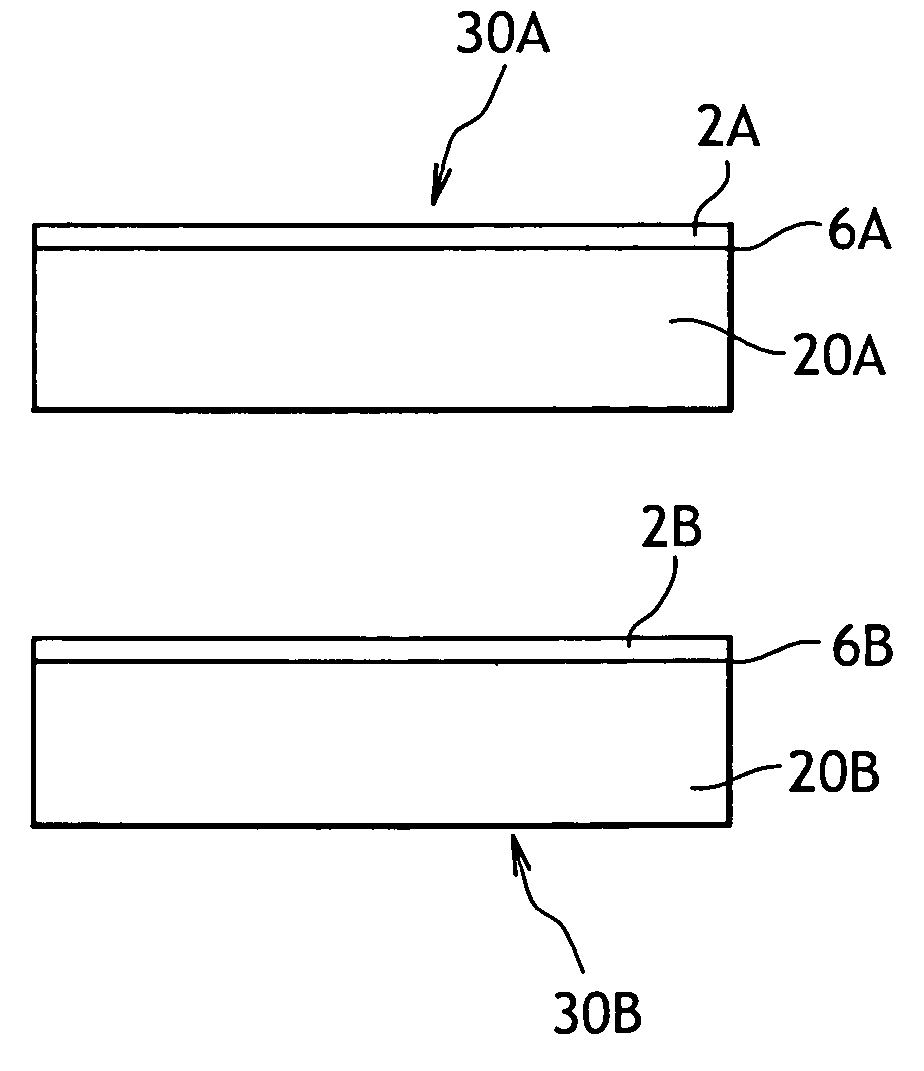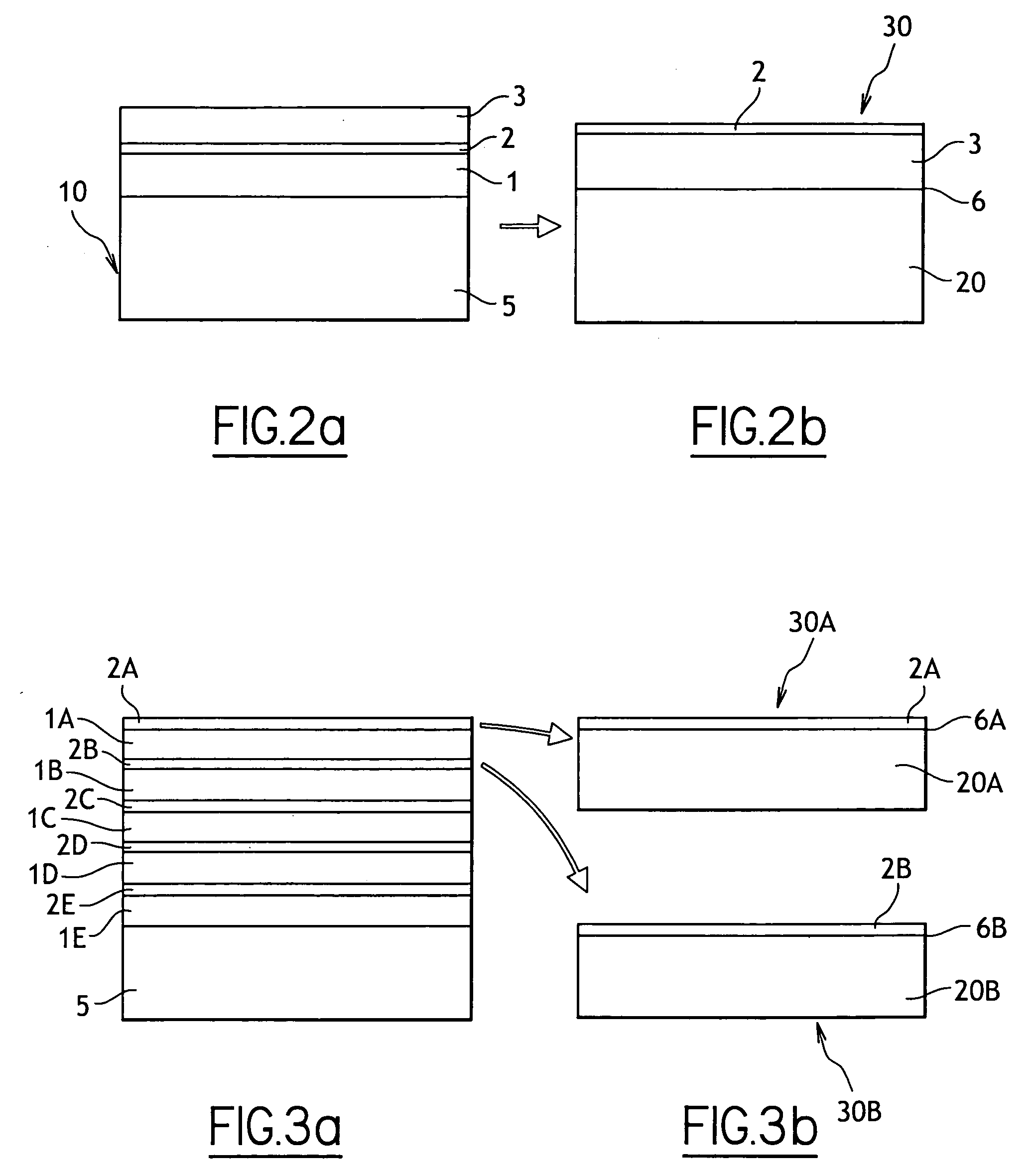Treatment of a removed layer of silicon-germanium
a technology of silicongermanium and removal layer, which is applied in the direction of basic electric elements, electrical apparatus, semiconductor devices, etc., can solve the problems of at least partial unbonding or disbonding of the bonding interface, long post-detachment finishing step (as well as the whole removal procedure), and high cos
- Summary
- Abstract
- Description
- Claims
- Application Information
AI Technical Summary
Benefits of technology
Problems solved by technology
Method used
Image
Examples
Embodiment Construction
[0023] The present invention now provides, in a first preferred embodiment, a method of forming a structure comprising a removed layer of semiconductor material taken from a donor wafer, the donor wafer comprising, prior to removal, a first layer formed of Si1-xGex and a second layer formed of Si1-yGey on the first layer, where, as noted, x and y respectively are in the range of 0 to 1, and with x being different from y. This method preferably comprises the following steps in succession:
[0024] a) implanting atomic species to form a zone of weakness beneath the second layer and in the first layer;
[0025] b) bonding the donor wafer to a receiver wafer;
[0026] c) supplying energy to detach removed layers from the donor wafer at the zone of weakness;
[0027] d) conducting a RTA carried out at a temperature of about 1000° C. or more for a period not exceeding 5 minutes; and then
[0028] e) conducting selective etching of the remaining portion of the first layer as opposed to the second la...
PUM
 Login to View More
Login to View More Abstract
Description
Claims
Application Information
 Login to View More
Login to View More - R&D
- Intellectual Property
- Life Sciences
- Materials
- Tech Scout
- Unparalleled Data Quality
- Higher Quality Content
- 60% Fewer Hallucinations
Browse by: Latest US Patents, China's latest patents, Technical Efficacy Thesaurus, Application Domain, Technology Topic, Popular Technical Reports.
© 2025 PatSnap. All rights reserved.Legal|Privacy policy|Modern Slavery Act Transparency Statement|Sitemap|About US| Contact US: help@patsnap.com



